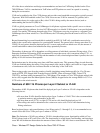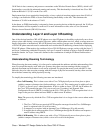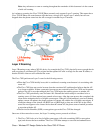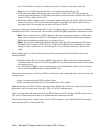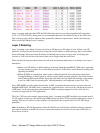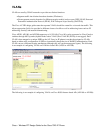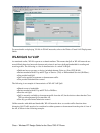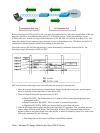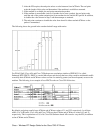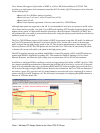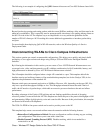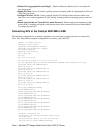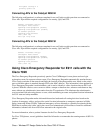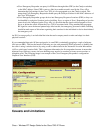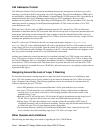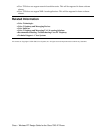Call Admission Control
Call Admission Control (CAC) provides the mechanism that prevents the presence of the next voice call to
interrupt or provide poor QoS for all existing voice calls. Regarding Time−Division Multiplex (TDM), this is
accomplished by a finite number of DS0 channels. In wired Ethernet AVVID networks, this is provided by an
interaction between the Cisco CallManager regions and Cisco H.323 gatekeepers. However, these
mechanisms only address CAC for the initial setup of IP Telephony calls. They do not address CAC when the
underlying network is changing for the IP phone throughout the call. This is the case when a Cisco 7920
roams between two APs.
While the Cisco APs does send out QBSS information about the CU, and the Cisco 7920 can utilize this
information to determine the best AP to associate with, this does not provide a 100 percent guarantee that calls
retain proper QoS during a roam between APs. One example of when this degraded QoS could occur is an
event that causes more than seven or eight active Cisco 7920s to roam into an area served by a single AP, thus
exceeding the guidelines for calls per AP.
If the CU is above the CU threshold, the call is not setup and the phone displays a network busy
message. If the CU of the candidate handoff AP is above the threshold, the Cisco 7920 remains associated
to the existing AP for as long as possible. Once the current AP is lost (no probe response or beacons received),
the Cisco 7920 handsoff to the candidate AP regardless of the CU. A beep is heard before this happens so the
user can go back toward the current AP or stop and finish the conversation.
Another area of admission control that needs to be considered with the Cisco 7920 is when a user takes the
Cisco 7920 from one location to another (such as campus to branch). When the Cisco 7920 re−registers with
the Cisco CallManager, there is no mechanism that updates which Cisco CallManager region (or gatekeeper
zone) the Cisco 7920 is associated with. This means that it is possible that calls to or from that Cisco 7920
would not properly be accounted for across a WAN link, and could cause poor voice quality to phones that are
registered in that region.
Designing Around the Lack of Layer 3 Roaming
For customers that require roaming support for a large area (such as between floors of a buildings), large
Layer 2 VLANs (spanning across access switches) can be created to eliminate the Cisco 7920s crossing an
Layer 3 boundary when roaming. The following guidelines need to be considered for customers that are
looking to deploy large Layer 2 VLANs:
Cisco ESE guidelines do not recommend that data VLANs span multiple access switches.•
An Layer 2 VLAN should not cross a building boundary. If this is required, then an additional
(overlay) Layer 2 core needs to be built to avoid creating instability and excessive traffic in the
traditional Layer 3 core.
•
Both the voice VLAN and the native VLAN on the AP need to be trunked across the large Layer 2
VLAN. This is required to allow both voice traffic and IAPP traffic between the APs.
•
Having Layer 2 VLANs span multiple access switches creates the possibility of STP loops (if
configured incorrectly) and overall network instability. Designs using this should model should be
reviewed with your Cisco Systems Engineer before deployment.
•
For customers that may eventually be considering extending their Layer 3 networks down to the
access switches, the model of building large Layer 2 VLANs is no longer valid.
•
Other Caveats and Limitations
The following are other things to be aware of regarding the Cisco 7920 IP Phone:
Cisco − Wireless IPT Design Guide for the Cisco 7920 IP Phone



